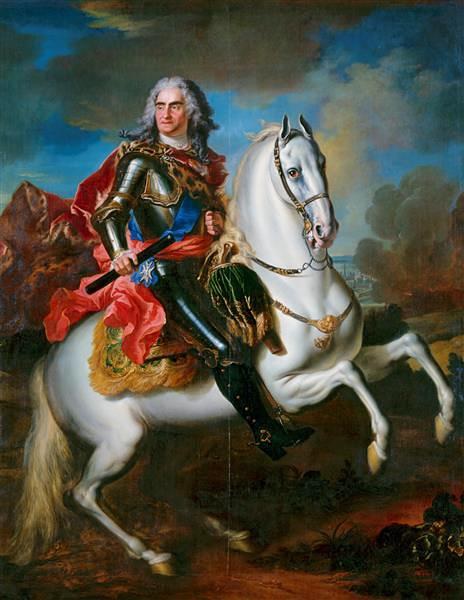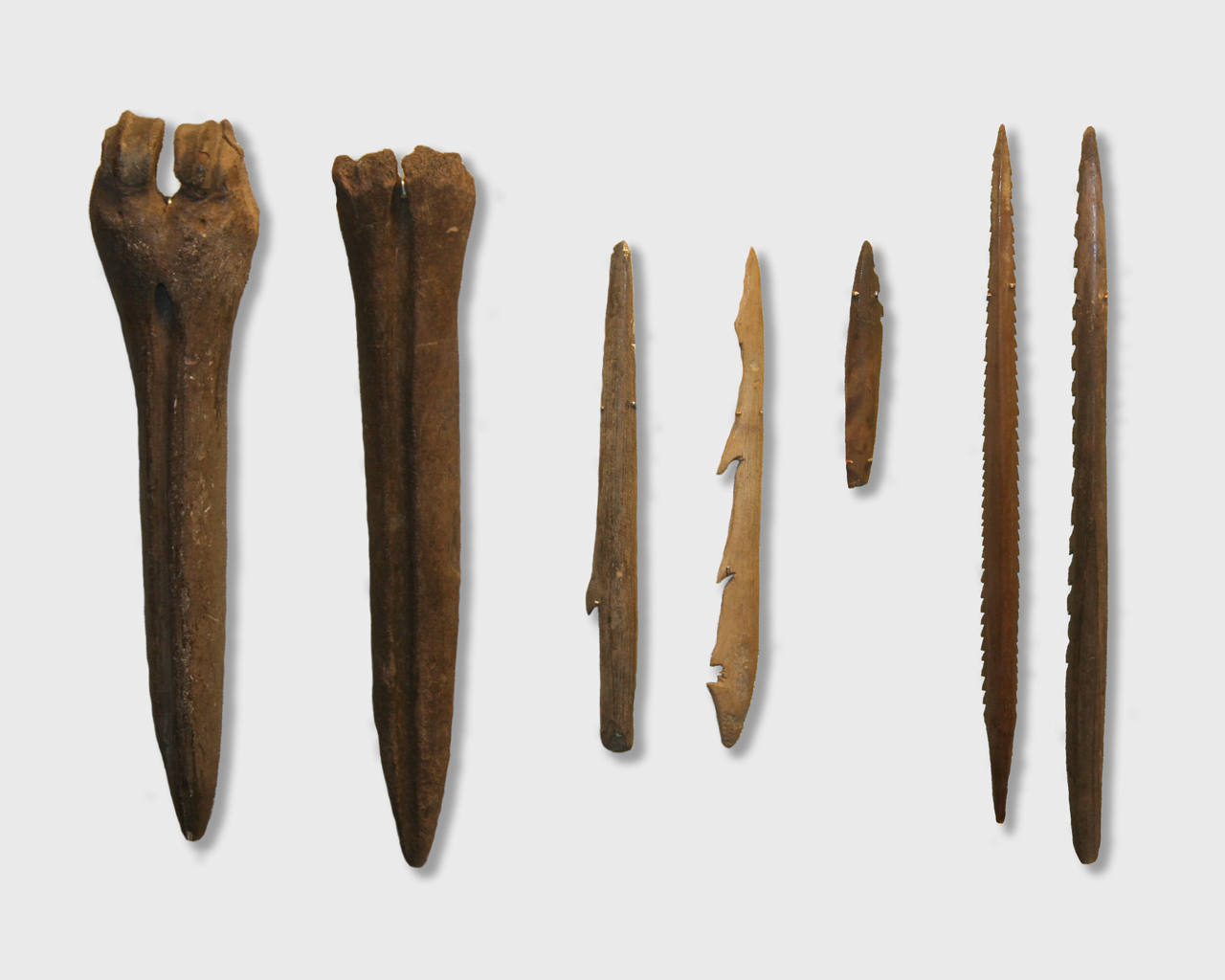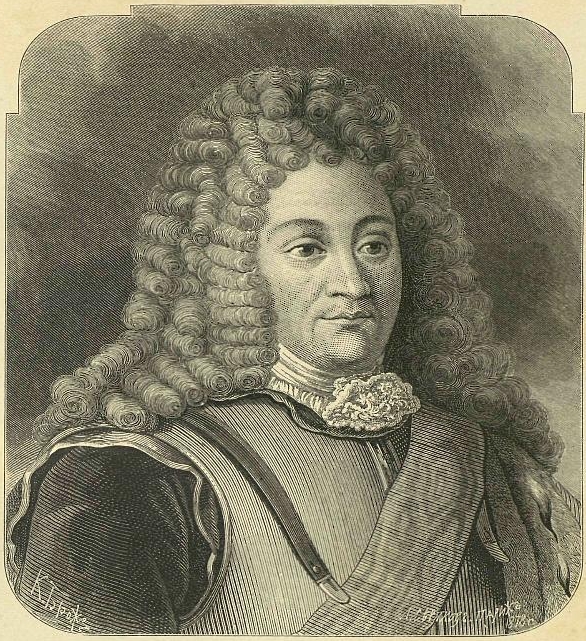|
Treaty Of Thorn (1709)
Concluded on 9 October 1709, the Treaty of Thorn was an agreement signed in Thorn (Toruń) between Augustus the Strong of the Polish-Lithuanian Commonwealth and his counterpart, Peter the Great the Tsar of Russia. Through this agreement, the two parties revived an alliance from an earlier treaty between them in 1699, which their common rival Charles XII of Sweden had dismantled through the 1706 Treaty of Altranstädt. In the 1709 treaty, the two parties agreed to restore the Polish crown to Augustus among various other provisions with different implications for both parties and their respective nations. A close examination of the background to the agreement as well as the terms, implementation, and implications of the Treaty of Thorn underscores its significance in marking the Tsar’s and Russia’s ascendance into a powerful regional player in northeastern Europe. Background During the Great Northern War, a resounding Russian victory had brought down Charles XII and his Polish ... [...More Info...] [...Related Items...] OR: [Wikipedia] [Google] [Baidu] |
Peter The Great
Peter I ( – ), most commonly known as Peter the Great,) or Pyotr Alekséyevich ( rus, Пётр Алексе́евич, p=ˈpʲɵtr ɐlʲɪˈksʲejɪvʲɪtɕ, , group=pron was a Russian monarch who ruled the Tsardom of Russia from to 1721 and subsequently the Russian Empire until his death in 1725, jointly ruling with his elder half-brother, Ivan V until 1696. He is primarily credited with the modernisation of the country, transforming it into a European power. Through a number of successful wars, he captured ports at Azov and the Baltic Sea, laying the groundwork for the Imperial Russian Navy, ending uncontested Swedish supremacy in the Baltic and beginning the Tsardom's expansion into a much larger empire that became a major European power. He led a cultural revolution that replaced some of the traditionalist and medieval social and political systems with ones that were modern, scientific, Westernised and based on the Enlightenment. Peter's reforms had a last ... [...More Info...] [...Related Items...] OR: [Wikipedia] [Google] [Baidu] |
Augustus III Of Poland
Augustus III ( pl, August III Sas, lt, Augustas III; 17 October 1696 5 October 1763) was King of Poland and Grand Duke of Lithuania from 1733 until 1763, as well as Elector of Saxony in the Holy Roman Empire where he was known as Frederick Augustus II (german: link=no, Friedrich August II). He was the only legitimate son of Augustus II the Strong, and converted to Roman Catholicism in 1712 to secure his candidacy for the Polish throne. In 1719 he married Maria Josepha, daughter of Joseph I, Holy Roman Emperor, and became Elector of Saxony following his father's death in 1733. Augustus was able to gain the support of Charles VI by agreeing to the Pragmatic Sanction of 1713 and also gained recognition from Russian Empress Anna by supporting Russia's claim to the region of Courland. He was elected king of Poland by a small minority on 5 October 1733 and subsequently banished the former Polish king Stanisław I. He was crowned in Kraków on 17 January 1734. Augustus was supp ... [...More Info...] [...Related Items...] OR: [Wikipedia] [Google] [Baidu] |
Treaty Of Preobrazhenskoye
The Treaty of Preobrazhenskoye (or the Treaty of Preobrazhenskoe) was negotiated by Johann Patkul and signed on 22 November 1699 in Preobrazhenskoye (now a part of Moscow), a favoured residence of the tsar Peter the Great. It followed an informal meeting of Peter and Augustus at Rava (Rawa, Rava-Ruska, Rava-Ruskaya) in August 1698. The treaty called for the partition of the Swedish Empire among Denmark-Norway, Russia, Saxony and the Polish–Lithuanian Commonwealth. Following the treaty, the Great Northern War The Great Northern War (1700–1721) was a conflict in which a coalition led by the Tsardom of Russia successfully contested the supremacy of the Swedish Empire in Northern, Central and Eastern Europe. The initial leaders of the anti-Swe ... began. Sources * * External linksScan of the treaty at IEG Mainz 1699 treaties 1699 in Europe Preobr Preobr Preobrazhenskoye 1699 in the Polish–Lithuanian Commonwealth 1699 in Russia Bilateral treaties of Ru ... [...More Info...] [...Related Items...] OR: [Wikipedia] [Google] [Baidu] |
History Of Estonia
The history of Estonia forms a part of the history of Europe. Humans settled in the region of Estonia near the end of the last glacial era, beginning from around 8500 BC. Ancient Estonia: pre-history Mesolithic Period The region has been populated since the end of the Late Pleistocene glaciation, about 10,000 BC. The earliest traces of human settlement in Estonia are connected with the Kunda culture. The early mesolithic Pulli settlement is located by the Pärnu River. It has been dated to the beginning of the 9th millennium BC. The Kunda culture received its name from the ''Lammasmäe'' settlement site in northern Estonia, which dates from earlier than 8500 BC. Bone and stone artifacts similar to those found at Kunda have been discovered elsewhere in Estonia, as well as in Latvia, northern Lithuania and southern Finland. Among minerals, flint and quartz were used the most for making cutting tools. Neolithic Period The beginning of the Neolithic Period is marked b ... [...More Info...] [...Related Items...] OR: [Wikipedia] [Google] [Baidu] |
Swedish Empire
The Swedish Empire was a European great power that exercised territorial control over much of the Baltic region during the 17th and early 18th centuries ( sv, Stormaktstiden, "the Era of Great Power"). The beginning of the empire is usually taken as the reign of Gustavus Adolphus, who ascended the throne in 1611, and its end as the loss of territories in 1721 following the Great Northern War. After the death of Gustavus Adolphus in 1632, the empire was controlled for lengthy periods by part of the high nobility, such as the Oxenstierna family, acting as regents for minor monarchs. The interests of the high nobility contrasted with the uniformity policy (i.e., upholding the traditional equality in status of the Swedish estates favoured by the kings and peasantry). In territories acquired during the periods of ''de facto'' noble rule, serfdom was not abolished, and there was also a trend to set up respective estates in Sweden proper. The Great Reduction of 1680 put an end to th ... [...More Info...] [...Related Items...] OR: [Wikipedia] [Google] [Baidu] |
Swedish Livonia
Swedish Livonia ( sv, Svenska Livland) was a dominion of the Swedish Empire from 1629 until 1721. The territory, which constituted the southern part of modern Estonia (including the island of Ösel ceded by Denmark after the Treaty of Brömsebro) and the northern part of modern Latvia (the Vidzeme region), represented the conquest of the major part of the Polish-Lithuanian Duchy of Livonia during the 1600–1629 Polish-Swedish War. Parts of Livonia and the city of Riga were under Swedish control as early as 1621 and the situation was formalized in the Truce of Altmark 1629, but the whole territory was not ceded formally until the Treaty of Oliva in 1660. The minority part of the Wenden Voivodeship retained by the Polish–Lithuanian Commonwealth was renamed the Inflanty Voivodeship ("''Livonian Principality''"), which today corresponds to the Latgale region of Latvia. Riga was the second largest city in the Swedish Empire at the time. Together with other Baltic Sea do ... [...More Info...] [...Related Items...] OR: [Wikipedia] [Google] [Baidu] |
Swedish Pomerania
Swedish Pomerania ( sv, Svenska Pommern; german: Schwedisch-Pommern) was a dominion under the Swedish Crown from 1630 to 1815 on what is now the Baltic coast of Germany and Poland. Following the Polish War and the Thirty Years' War, Sweden held extensive control over the lands on the southern Baltic coast, including Pomerania and parts of Livonia and Prussia (''dominium maris baltici''). Sweden, which had been present in Pomerania with a garrison at Stralsund since 1628, gained effective control of the Duchy of Pomerania with the Treaty of Stettin in 1630. At the Peace of Westphalia in 1648 and the Treaty of Stettin in 1653, Sweden received Western Pomerania (German ''Vorpommern''), with the islands of Rügen, Usedom, and Wolin, and a strip of Farther Pomerania (''Hinterpommern''). The peace treaties were negotiated while the Swedish queen Christina was a minor, and the Swedish Empire was governed by members of the high aristocracy. As a consequence, Pomerania was not anne ... [...More Info...] [...Related Items...] OR: [Wikipedia] [Google] [Baidu] |
Stralsund
Stralsund (; Swedish: ''Strålsund''), officially the Hanseatic City of Stralsund (German: ''Hansestadt Stralsund''), is the fifth-largest city in the northeastern German federal state of Mecklenburg-Western Pomerania after Rostock, Schwerin, Neubrandenburg and Greifswald, and the second-largest city in the Pomeranian part of the state. It is located at the southern coast of the Strelasund, a sound of the Baltic Sea separating the island of Rügen from the Pomeranian mainland.'' Britannica Online Encyclopedia'', "Stralsund" (city), 2007, webpageEB-Stralsund The Strelasund Crossing with its two bridges and several ferry services connects Stralsund with Rügen, the largest island of Germany and Pomerania. The Western Pomeranian city is the seat of the Vorpommern-Rügen district and, together with Greifswald, Stralsund forms one of four high-level urban centres of the region. The city's name as well as that of the Strelasund are compounds of the Slavic ( Polabian) ''stral ... [...More Info...] [...Related Items...] OR: [Wikipedia] [Google] [Baidu] |
Warsaw
Warsaw ( pl, Warszawa, ), officially the Capital City of Warsaw,, abbreviation: ''m.st. Warszawa'' is the capital and largest city of Poland. The metropolis stands on the River Vistula in east-central Poland, and its population is officially estimated at 1.86 million residents within a greater metropolitan area of 3.1 million residents, which makes Warsaw the 7th most-populous city in the European Union. The city area measures and comprises 18 districts, while the metropolitan area covers . Warsaw is an Alpha global city, a major cultural, political and economic hub, and the country's seat of government. Warsaw traces its origins to a small fishing town in Masovia. The city rose to prominence in the late 16th century, when Sigismund III decided to move the Polish capital and his royal court from Kraków. Warsaw served as the de facto capital of the Polish–Lithuanian Commonwealth until 1795, and subsequently as the seat of Napoleon's Duchy of Warsaw. Th ... [...More Info...] [...Related Items...] OR: [Wikipedia] [Google] [Baidu] |
Treaty Of Copenhagen (1709)
On 22 October 1709, during the Great Northern War, the alliance between the Russian Empire and Denmark-Norway was renewed in the Treaty of Copenhagen. Charles XII of Sweden had destroyed the previous alliance in Travendal (1700). For Russia, Vasily Lukich Dolgorukov signed the treaty in Copenhagen. See also * Treaty of Copenhagen (other), for other treaties known by this name Sources * External linksScan of the treaty at IEG Mainz {{Great Northern War treaties Copenhagen Copenhagen ( or .; da, København ) is the capital and most populous city of Denmark, with a proper population of around 815.000 in the last quarter of 2022; and some 1.370,000 in the urban area; and the wider Copenhagen metropolitan ar ... 1709 treaties 1709 in Denmark 1700s in Poland Treaties of the Russian Empire Treaties of Denmark–Norway Bilateral treaties of Russia ... [...More Info...] [...Related Items...] OR: [Wikipedia] [Google] [Baidu] |
Riga
Riga (; lv, Rīga , liv, Rīgõ) is the capital and largest city of Latvia and is home to 605,802 inhabitants which is a third of Latvia's population. The city lies on the Gulf of Riga at the mouth of the Daugava river where it meets the Baltic Sea. Riga's territory covers and lies above sea level, on a flat and sandy plain. Riga was founded in 1201 and is a former Hanseatic League member. Riga's historical centre is a UNESCO World Heritage Site, noted for its Art Nouveau/Jugendstil architecture and 19th century wooden architecture. Riga was the European Capital of Culture in 2014, along with Umeå in Sweden. Riga hosted the 2006 NATO Summit, the Eurovision Song Contest 2003, the 2006 IIHF Men's World Ice Hockey Championships, 2013 World Women's Curling Championship and the 2021 IIHF World Championship. It is home to the European Union's office of European Regulators for Electronic Communications (BEREC). In 2017, it was named the European Region of Gastrono ... [...More Info...] [...Related Items...] OR: [Wikipedia] [Google] [Baidu] |





